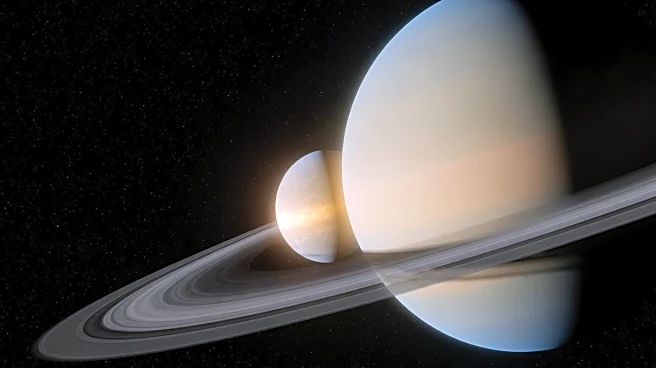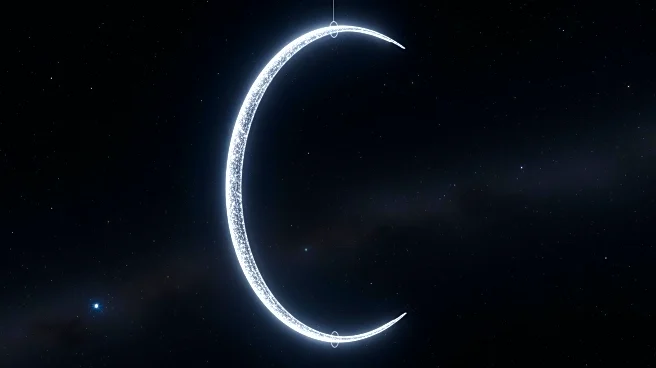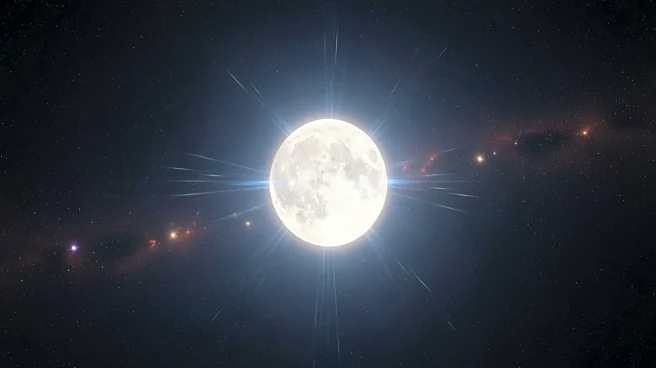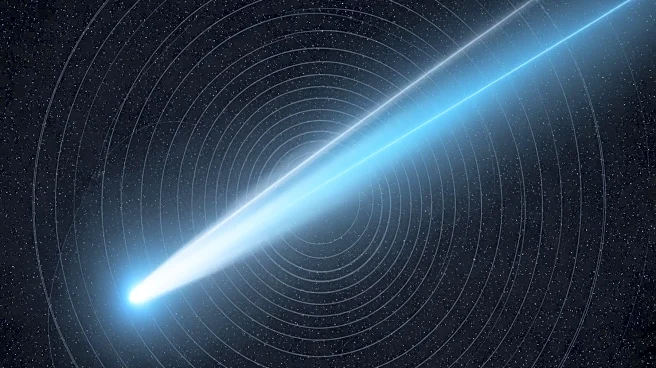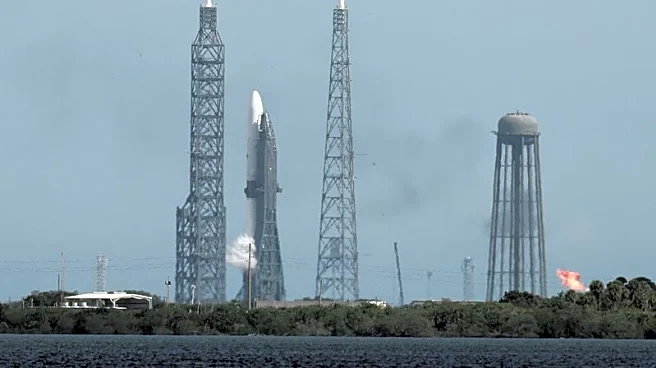What's Happening?
On November 14, Titan, Saturn's largest moon, will reappear from behind the planet's disk, offering a celestial spectacle for observers in the eastern U.S. The event begins at 7:26 p.m. EST, with Titan emerging
from occultation. Saturn will be prominently visible in the southern sky, accompanied by other moons like Dione, Tethys, and Rhea. This astronomical event provides an opportunity for skywatchers to observe the dynamics of Saturn's moons and the planet's position in Aquarius.
Why It's Important?
The reappearance of Titan is a significant event for astronomy enthusiasts and provides a unique opportunity to observe the interactions between Saturn and its moons. Such events enhance public interest in astronomy and can inspire educational initiatives and community engagement in science. Observing celestial phenomena like Titan's reappearance can deepen understanding of planetary dynamics and contribute to ongoing research in planetary science. This event underscores the importance of public access to astronomical observations and the role of amateur astronomers in scientific discovery.
What's Next?
Skywatchers are encouraged to set up telescopes in advance to capture the event, which may also be visible through high-speed video cameras. As interest in astronomy grows, similar celestial events may lead to increased participation in local astronomy clubs and educational programs. The visibility of Saturn and its moons could inspire further research and observation projects, contributing to the broader field of planetary science.
Beyond the Headlines
The fascination with celestial events like Titan's reappearance highlights the cultural and educational value of astronomy. It reflects humanity's enduring curiosity about the universe and the desire to explore and understand our cosmic surroundings. This event may inspire future generations to pursue careers in science and technology, emphasizing the importance of STEM education and public engagement in scientific endeavors.
